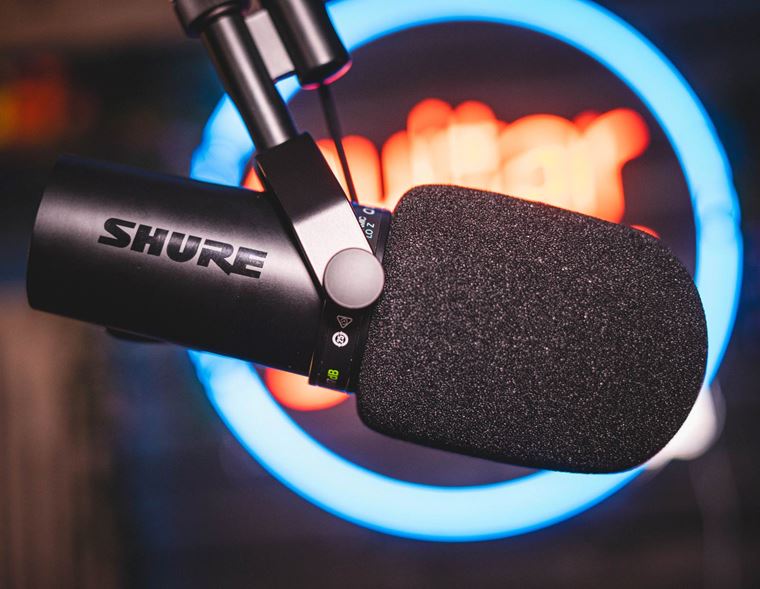Squier Classic Vibe: What Makes Them So Good?
Published on 26 February 2024
Have you tried a Squier Classic Vibe guitar or bass?
For well over a decade now, Squier’s Classic Vibe sub brand has quietly won over retro fans and sceptical guitarists with a range of genuinely exciting and well-made guitars, with inspiration drawn directly from Fender’s most historical models.
From blonde 50s-style Teles and 70s Jaguars with block inlays to vintage-style Strats and Jazz basses, the Squier Classic Vibe imprint is now looked at as a legitimate option for players of all levels and styles.
The recent winter NAMM show revealed some excellent new Classic Vibe models, so I thought now’s as good a time as any to assess the range and check out some highlights!
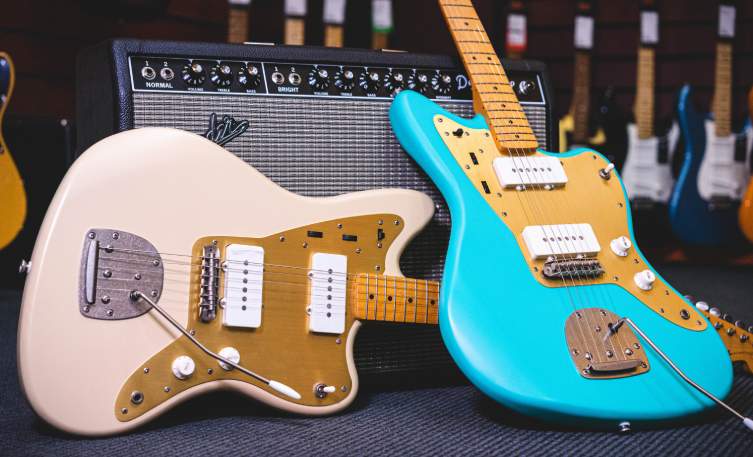
Contents
Classic Vibe 50s Telecaster Butterscotch Blonde
NEW Classic Vibe Limited Edition 60s Telecaster
Squier Classic Vibe 70s Jaguar
Squier Classic Vibe 60s Jazz Bass
Squier Classic Vibe
On paper, it seems super obvious: make vintage style guitars, based on famous designs, at low prices that will appeal even to professional players. It’s the recipe for success, right? That said, there are still a lot of guitar fans out there who are swayed by a logo on a headstock. Squier’s name equates to ‘beginner guitar’ to lots of people, thanks to their dominance of the entry-level market.
Or at least, that’s how things started off when the Classic Vibe range hit the market in the early 2010s. At that point, it was unclear to all about who would be willing to spend more on a ‘premium’ Squier guitar, even if it had lots of desirable specification and style points going for it. Was the price just too close to the Fender-branded Mexican Standard range? Would players be willing to spend more on what seemed to be a ‘budget’ guitar?
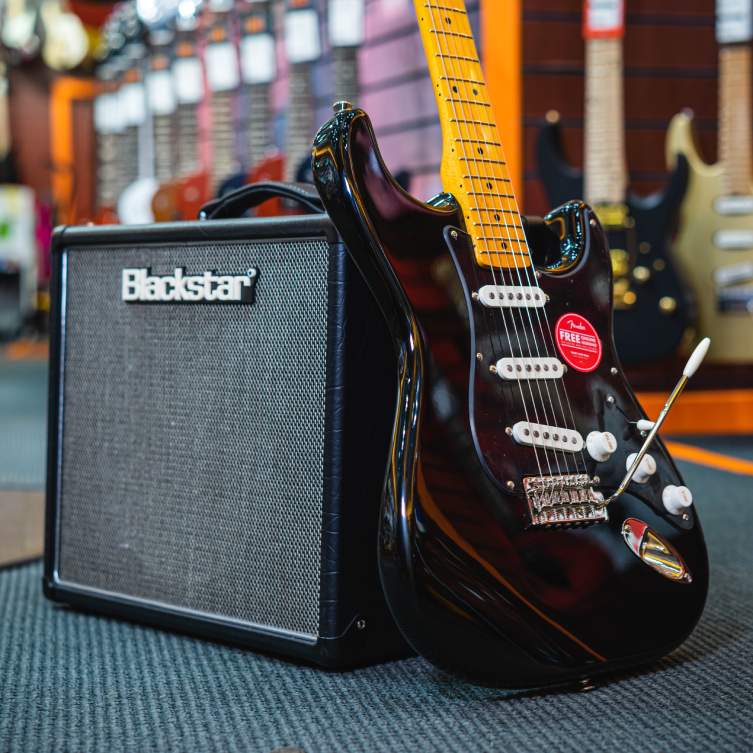
Well, it seems that most guitar players were willing to at least give the Classic Vibes a chance: a quick test in stores revealed these keenly priced axes to be right on the money, and so the guitar-playing public voted with their wallets. After all, these are more ‘vintage correct; than ever the Fender-branded guitars in adjacent price points. The Classic Vibe range is fun, very cool, and importantly possess an excellent blend of today’s playability when yesterday’s iconic looks.
The Classic Vibes quickly became more than acceptable: they are now seen as solid, dependable and high quality choices for any guitarist who doesn’t necessarily want to take their pride and joy out to a gig. Players who are used to expensive instruments are getting on well with the Classic Vibe instruments, and finding them an excellent workhorse for practice and live use. The range has expanded as a result, and we’ll take a glance at a few favourites alongside the newbies soon, but first: how ‘classic’ are these guitars?
Vintage Reissues?
The Squier Classic Vibe heavily references the glory days of 50s, 60s and 70s Fender. There are lots of details that hark back to famous and well-loved models, but the Classic Vibe guitars are not strictly trying to be vintage reissues. Certain facets of their design and specification are more in line with today’s standards than 60 years ago. Let’s take a quick glance at the vintage elements and the less-so…
Vintage Features
- Classic body shapes
- Retro colours
- Gold headstock logo
- Period-referencing hardware (3-saddle bridges for the Telecasters, proper floating tremolos on the Jags and Jazzmasters)
- Fender Designed pickups with alnico magnets
- 1-ply pickguards where appropriate
- Narrow-tall frets
- Period details such as block inlays and binding on appropriate models
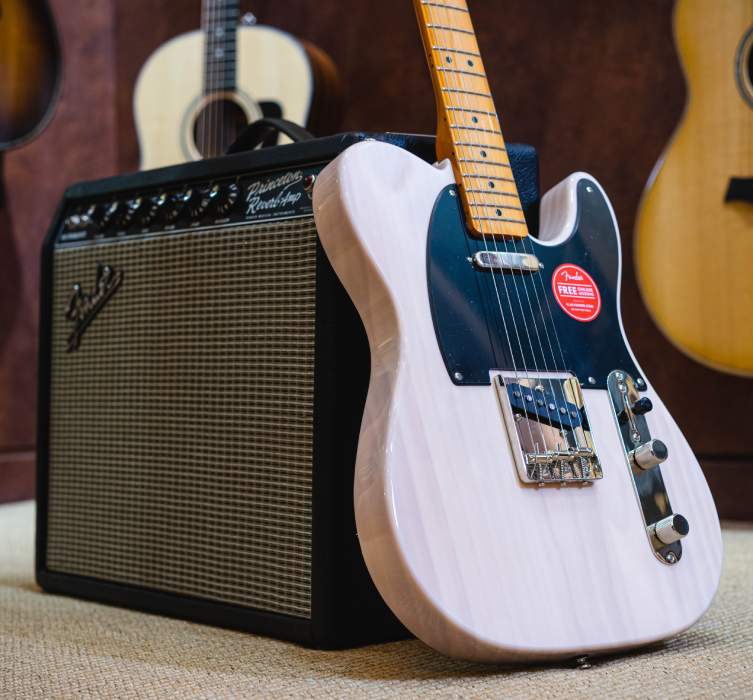
Contemporary Features
- 9.5” fingerboard radii
- Alternative body wood choices (though the 50s Tele is made from Pine, impressively!)
- 5-way switches on Strats
- C shaped neck profiles across the range
- Polyurethane finishes
To me, these concessions to today's playing standards are more about making the instruments objectively better than about cutting any vintage corners. Besides, Fender offer more specifically ‘correct’ vintage-themed guitars in ranges such as the Vintera II series, so if you’re after more authenticity, it’s there to be had, though not at Classic Vibe prices!
Now, let’s take a look at some popular models and a couple of new additions to the CV range…

Classic Vibe 50s Telecaster Butterscotch Blonde
The perennially popular ‘Blackguard’ tele is no less potent in this super-affordable Classic Vibe 50s Telecaster guise. One of the earliest models released, it’s still so routinely popular that it frequently sells out!
Why? Well, Squier have built this with a pine body for one thing, which is actually how the early 1951 and 52 Teles were. Pine is tricky to work with and hard to find in the guitar market, so these are relatively unusual. Pair this with a great look, a 3-barrel bridge and great alnico pickups, and you have a Tele that can compete in any context.

NEW Classic Vibe Limited Edition 60s Telecaster
This lovely animal was unveiled a few weeks back at the NAMM show and I can’t wait to check this out in person! It’s a limited edition 60s-style Tele featuring a popular mod from back then: a humbucker in the neck position. Again, these are all alnico pickups, so you’ll get lots of spank and twang (insert other terms as required) with the added muscle of a smooth sounding neck humbucker. I particularly like the painted headstock on this model, and the colour choices are on point: all-black or Sherwood Green with a ‘torty’ guard. Excellent!
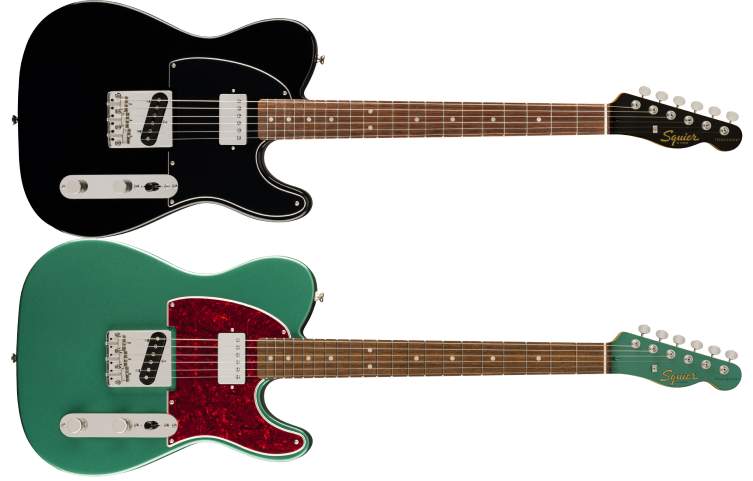
Squier Classic Vibe 70s Jaguar
It’s a crazy thing when Squier make a more authentic offset than Fender! Such was the case when this 70s Jaguar was released, because the next model up in price - the Fender Player Jaguar - is decidedly non-retro.
This one, however, is, and it’s full of details: eye-catching block inlays, the correct twin circuit (with ‘strangle switch’) and a very decent take on the Jag’s inimitable tremolo. All of these make for a decidedly authentic and affordable version of Fender’s most idiosyncratic guitar.

Squier Classic Vibe 60s Jazz Bass
A good Jazz bass is really all you need: they have style, they are easy to play and there isn’t a genre you cannot tackle with one!
This Squier Classic Vibe 60s Jazz Bass is such an example. I’m already a sucker for the Fender ‘Surf’ colours such as this Daphne Blue, and adding a tortoise pickguard is just the creme de la creme! A slim neck is available here, easy to navigate and solid in the hand. The spec from above applies to Classic Vibe basses: great sounding alnico pickups are onboard, and the whole package is just a classy thing to behold.

Classic Vibe for Everybody
For players on a budget, Squier Classic Vibe guitars and basses are a godsend. You’ll play on a good quality guitar that sounds excellent, doesn’t break the bank and looks totally cool: what more do you need?
But there’s more to this equation than just affordability. As a player of some 30 years’ experience, and as someone who has played and assessed literally thousands of guitars, I can tell you that the Classic Vibe range are the real deal. As I mentioned before, these are not vintage replicas, nor are they modelled on overly specific specs, but they are great instruments to strap around your neck and get playing on. In my opinion, these are totally good enough for gigging with, and you’ll have to spend about double to notice much of an upgrade in quality.

Even if you already own a number of expensive guitars, the sheer breadth of range available in the CV lineup is enough to justify trying some models out. Do you have a thinline Tele? A Jag? What about a Bass VI? Classic Vibe is where to come to check out some slightly less usual - but still wholly legendary - instruments, without investing thousands on a style you’ve never lived with before. Maybe you’re a guitarist who is looking to add a bass to your armoury? A nice 50s or 60s CV bass could be just the ticket.
Give ‘em a try!
Click to View our Squier Classic Vibe Instruments







